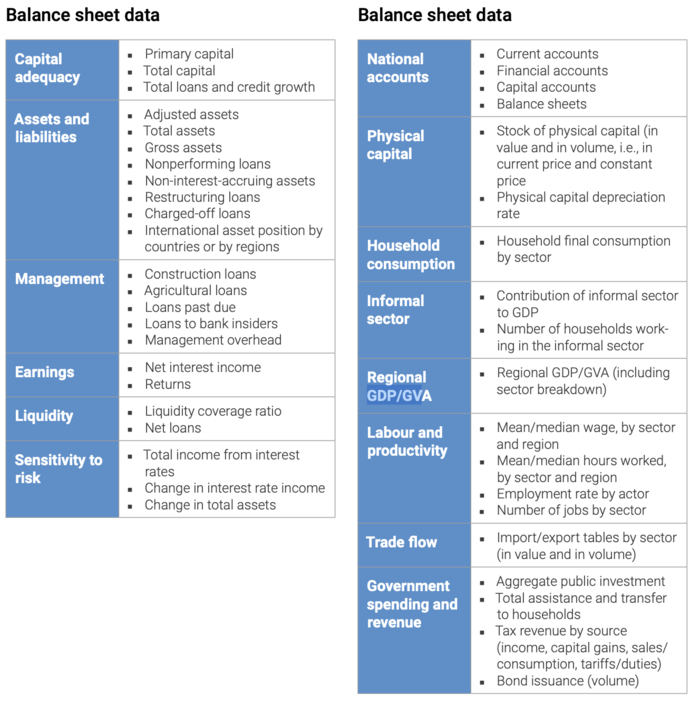All Physical Risk Datasets: Difference between revisions
Tag: Undo |
removed "biodiversity loss" to a new section on the side bar |
||
| Line 11: | Line 11: | ||
! scope="col" style="width: 100px;" | Ice and Snow | ! scope="col" style="width: 100px;" | Ice and Snow | ||
! scope="col" style="width: 100px;" | Coastal and Oceanic | ! scope="col" style="width: 100px;" | Coastal and Oceanic | ||
|- | |- | ||
| | | | ||
| Line 36: | Line 35: | ||
* Ocean acidification | * Ocean acidification | ||
<!-- * Other chronic ocean changes: ocean warming, oxygen loss --> | <!-- * Other chronic ocean changes: ocean warming, oxygen loss --> | ||
|} | |} | ||
Revision as of 14:22, 23 October 2024
Climate Hazard Data
These are the data describing the drivers of physical risk. These data include climate information or information about current and projected hazard events.
| Hot and Cold | Wet and Dry | Hurricanes and Storms | Ice and Snow | Coastal and Oceanic |
|---|---|---|---|---|
|
|
|
|
Exposure Data
These are data describing exposures to the climate hazard. Key features used to construct the exposures include specific geographic locations of assets and systems, building or infrastructure characteristics such as construction materials, height, and flood resistance.
Vulnerability Data
These are the data describing the vulnerability of exposed assets and systems.
- Risk mapping by state and disaster by NCEI of NOAA[1]
- CDC/ATSDR social vulnerability index
- CDC/ATSDR environmental justice index
- Future climate-change related risk: View, Data Download
- Urban adaptation map viewer: https://climate-adapt.eea.europa.eu/en/knowledge/tools/urban-adaptation
Financial and Economic Data
These are the data needed to assess the impacts on the economy and financial sector. Key datasets required include balance-sheet data for systematically important banks and macroeconomic data. The table below listed the financial and macroeconomic data variables needed for risk assessment as suggested by UNEP (2023)[2].

- Historical disaster cost and frequency of the US by state and disaster type by NCEI of NOAA[1]
- EM-DAT data, the international database of worldwide disaster, hazards, and their damage from 1900 to present. The database is compiled from various sources, including UN agencies, non-governmental organizations, reinsurance companies, research institutes, and press agencies.
- CAT-DAT data
- Global Drought Proportional Economic Loss Risk Deciles
- FEMS's Hazus loss library
- Economic losses from weather- and climate- related extremes in Europe: https://www.eea.europa.eu/en/analysis/indicators/economic-losses-from-climate-related
- Climate related economic losses in Europe: View
- Economic losses and fatalities based on CATDATA: View
- NatCatSERVICE is a global natural catastrophe loss database provided by re-insurance company Munich Re. It is one of the world's most comprehensive databases on natural hazard-based disasters with more than 28 000 entries. It is based on over 200 sources worldwide, including news agencies, insurance companies, international agencies (UN, EU, Red Cross, etc.), scientific sources and weather and warning services. (Note to XL: it doesn't seem to be open-source, but it is listed by EEA).
References
- ↑ 1.0 1.1 NOAA National Centers for Environmental Information (NCEI) U.S. Billion-Dollar Weather and Climate Disasters (2024). https://www.ncei.noaa.gov/access/billions/, DOI: 10.25921/stkw-7w73
- ↑ UNEP FI (2023). The Climate Risk Landscape. Available at: https://www.unepfi.org/themes/climate-change/2023-climate-risk-landscape/